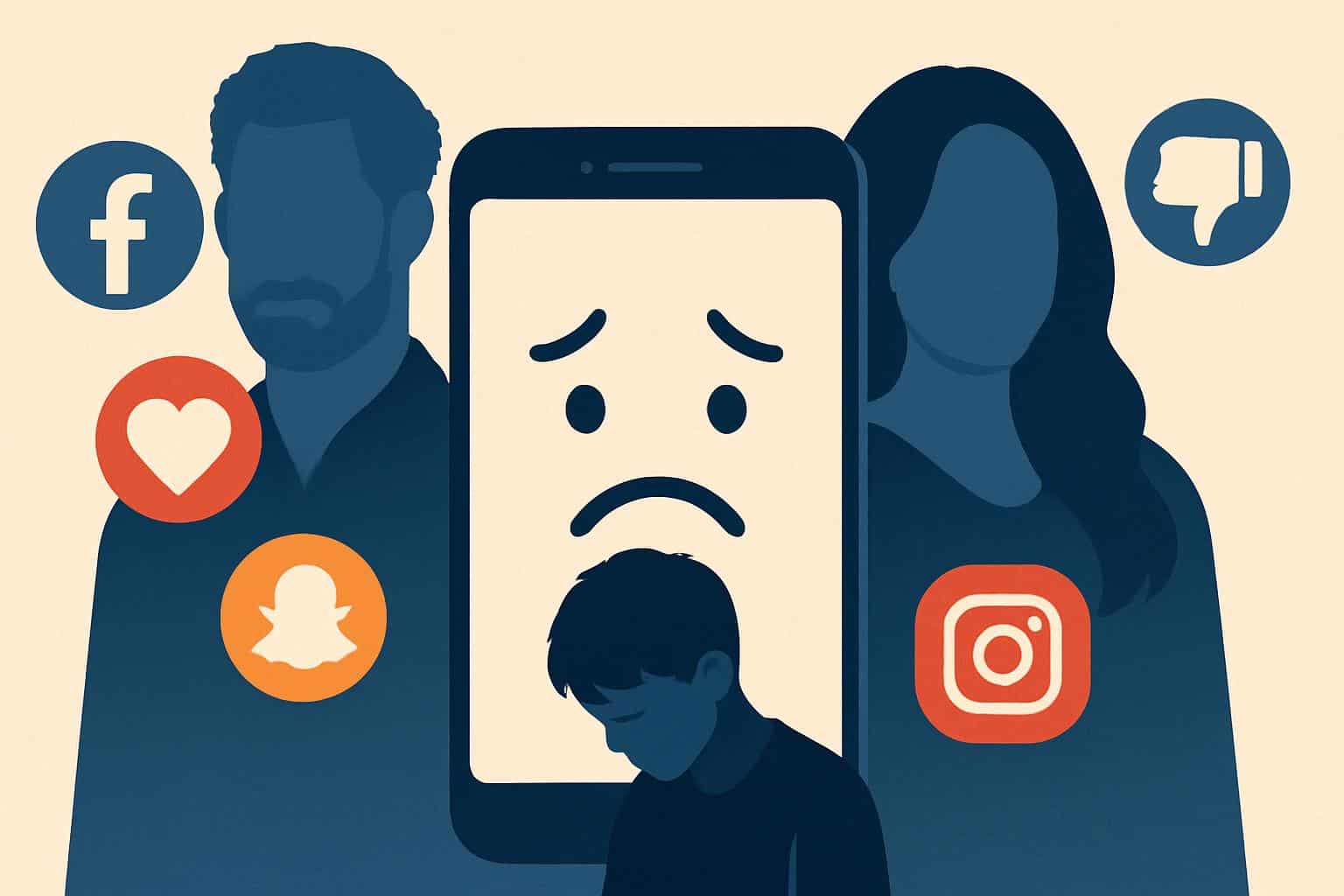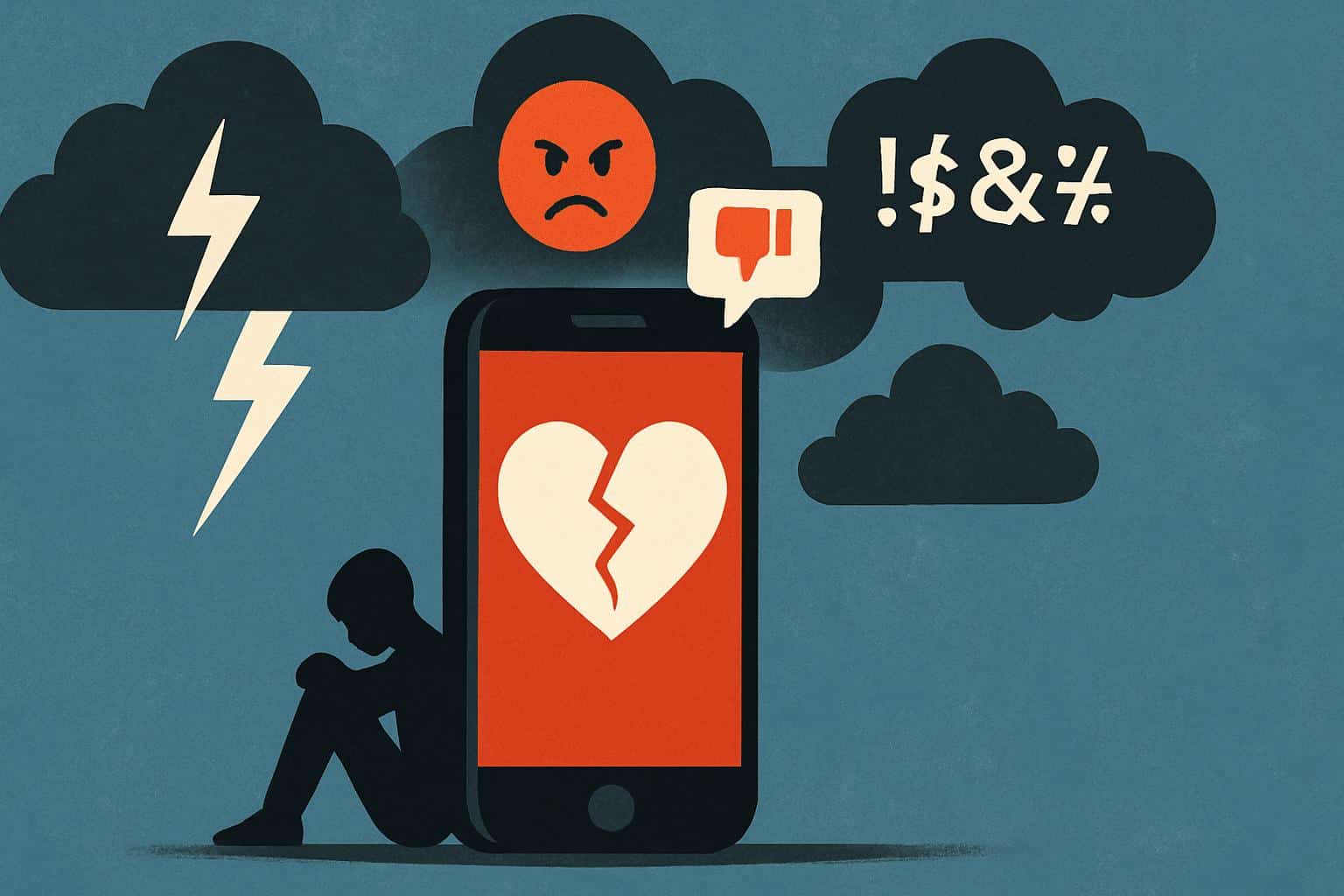Prince Harry and Meghan are focusing the spotlight on the mental health repercussions of social media, in a high-profile appearance where they pushed for tougher safeguards for young people and greater accountability from tech platforms. As they took a humanitarian award for their Archewell Foundation’s Parents Network, the couple shared families’ stories and showcased growing research and new partnerships to help speed up real-world change.
The message was clear: The current online ecosystem is not conducive to children’s well-being. They referred to legal action taken by families over platform harms and called on parents, policymakers and companies to close the gap “between what technology’s promised potential is for a child’s development and what it has actually delivered upon.”

Why their message on social media and youth resonates
Bereaved parents and advocates who say platform design has amplified the harms from eating disorders to drug trafficking that flows to teens in private messages are part of Archewell’s Parents Network. The couple said the Social Media Victims Law Center is representing thousands of families, a jarring proxy for the scale of grievances that are now making their way through court.
They also unveiled a partnership with ParentsTogether, a family advocacy organization, to synchronize policy pushes and practical resources for households. The method combines public pressure with testimony by survivors and engagement in the legislative process — a tactic that is changing the tenor of debates in statehouses and boardrooms.
What the data shows about teen social media impact
Research tying heavy social media use to a range of negative health outcomes for teens is developing, even though studies have been limited and show little about the effects over the long term, researchers say. The U.S. Surgeon General has said social media is putting our youth at risk and called on tech companies to better protect children through greater transparency around the effects of their platforms.
In the most recent national data from the CDC’s Youth Risk Behavior Survey, 57% of high school girls said that they felt persistently sad or hopeless — the highest share recorded. Emergency room trips for self-harm among teen girls skyrocketed in the last decade, a trend pediatric groups blamed on widespread smartphone and social media use.
Usage intensity remains striking. Almost all American teenagers use some form of social media, and a majority of them use several social media sites, according to a survey from the Pew Research Center; large majorities on Instagram, Snapchat, TikTok and YouTube say they visit these sites daily; about half say they are online on a near-constant basis. The aggregate amount of time that young people spend consuming screen-only entertainment has exploded, according to a new study, with most of that movement coming from cord-cutting teens and “tweens,” who have more control over their media habits than do older children.
Design choices under scrutiny for youth well-being
Yet critics maintain that the endless feeds, push alerts, streaks and auto-recommendation systems keep children engaged at the expense of well-being. Internal research shared with Congress in recent years found that Instagram worsened body image concerns for a segment of teen girls, highlighting the stakes of algorithmic curation at a time when personal identity and social comparison are in flux.

At Archewell-backed events, parents described what it felt like when content found their children — not the other way around: from weight-loss videos that flooded a For You page to “dealers” advertising counterfeit pills through disappearing messages. Proponents caution that more recent AI-driven chatbots and generative models can exacerbate potential for harm if controls do not keep pace, generating inappropriate or harmful advice on demand or at the suggestion of minors.
Policy and industry crossroads on online safety
Regulators are moving, if unevenly. In the U.K., the Online Safety Act and the Age-Appropriate Design Code make it mandatory for platforms to consider and mitigate risks to young people by default. In the European Union, the Digital Services Act mandates that the big platforms divulge algorithms and tackle systemic harms. In the United States, the Kids Online Safety Act has gained traction with bipartisan support and the F.T.C. is exploring updates to rules relating to children’s privacy. State-level efforts — from age-appropriate design requirements to stricter data protections — are proliferating, at times in the face of furious industry opposition in courts.
(The couple’s intervention is part of a wider wave from pediatric associations, teachers and civil society to move responsibility upstream — away from individual teens and toward platform accountability, safety by design and independent auditing of recommender systems.) The researchers say transparency provisions are critical to determine what children see, how much time they spend seeing it and which design features encourage problematic engagement.
Steps families and schools can take now to help
Until policy catches up, those experts suggest practical guardrails. The American Academy of Pediatrics recommends a family media plan that includes bedrooms free of devices, regular bedtimes and clear rules around homework time. Built-in parental controls and teen accounts can also help, but watchdogs warn that they are inconsistent and should not substitute for open discourse about algorithms, advertising and manipulation strategies.
The push to keep kids away from smartphones and social media is gaining some momentum. Schools are beefing up digital citizenship curricula from groups like Common Sense Education, and trying out phone-free school days to restore attention and in-the-flesh interaction. Solutions at the community level — safe after-school spaces, teams to play on and plain old unstructured play — all address our isolation that shoehorns kids back onto screens.
A spotlight with momentum on youth online safety
Harry and Meghan’s campaigning is not a panacea, but their platform serves to create public urgency out of private grief. By combining families’ experiences with solid research and tangible policy goals, their campaign injects new energy into a movement to reengineer the digital world in service of young people’s minds, not just their minutes. The test for platforms and policymakers today is whether that momentum carries forward into defaults and designs that actually keep kids safe.

